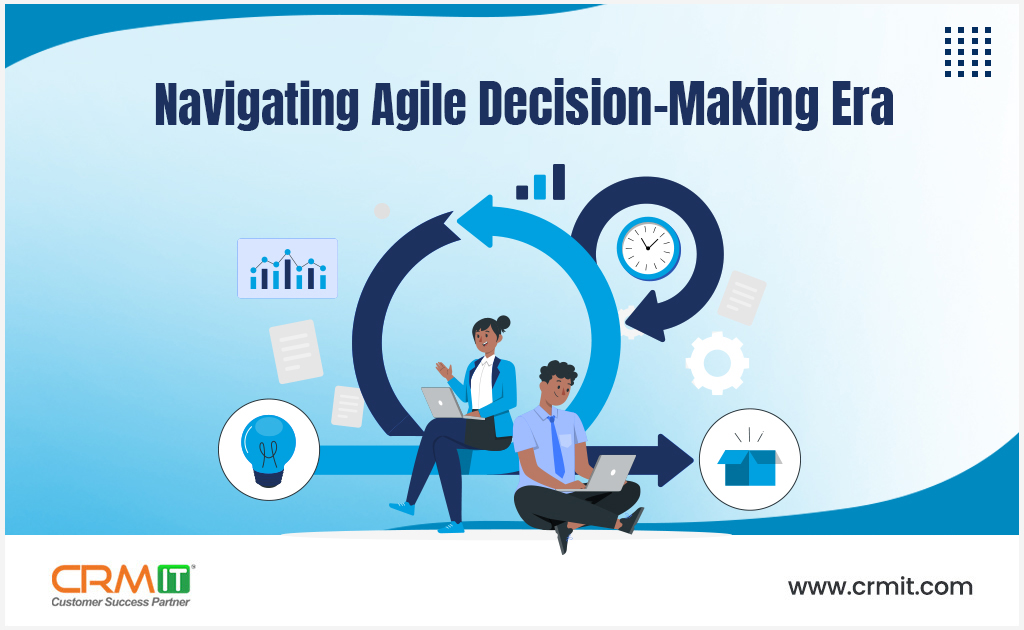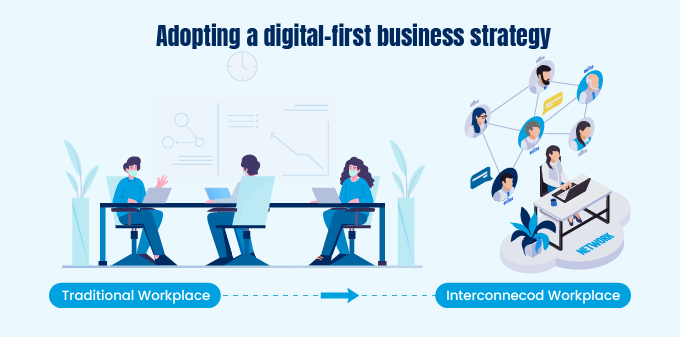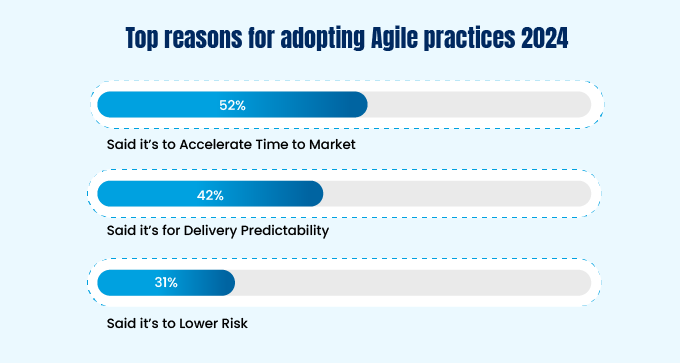Transforming Business Processes for Agile Decision Making

In today’s rapidly evolving business landscape, the ability to make swift, informed decisions is the linchpin of success. This blog post explores the pivotal role of decision science in fostering agile decision-making processes that propel businesses toward enhanced customer experiences, satisfaction, and revenue growth.
Unleashing the Power of Decision Science
Step 1: Embracing Digital Transformation
For most here, you have already set sail on the digital transformation path, and decision science is already a central role in this process. For most here, strategic choices are based on a comprehensive understanding of customer behaviors, market trends, and operational dynamics.
According to Gartner, a substantial 56% of CEOs attribute increased revenue to digital advancements, underscoring the transformative impact of embracing the digital era. Additionally, a remarkable 89% of companies have either already adopted or are planning to adopt a digital-first business strategy, reflecting the widespread recognition of its significance.

Step 2: Harnessing the Potential of Data-as-a-business
Despite the abundance of data collected by modern companies, only a handful have successfully capitalized on this valuable asset. Unleashing the complete potential of customer data is of utmost importance. Decision science plays a pivotal role in dissecting extensive datasets to comprehend customer behaviors and preferences. Emerging models, such as “data as a business,” are signaling the path forward.
According to recent labor market analyses, the field of data science is experiencing remarkable growth. Projections indicate a 36% increase in data scientist roles from 2021 to 2031, positioning it as one of the fastest-growing professions in the United States.
Step 3: Agile Methodologies
Agile methodologies are the cornerstone of swift decision-making. Adopting agile methodologies fosters a strong alignment between your team and the project’s mission and goals, instilling a genuine sense of ownership. This approach cultivates a sustained sense of purpose, steering away from artificial urgency. As a result, agile teams tend to exhibit higher levels of productivity and efficiency. A marriage made in heaven.

Step 4: Personalizing Customer Interactions
Traditional differentiation approaches are no longer as effective as they once were, as competitors can easily imitate them. Today’s customers expect a personalized (shopping) experience and an effective personalization operating model can help businesses and brands keep pace. Personalization is even called a “hygiene factor”: customers take it for granted, but if you get it wrong, customers may depart for a competitor. In general, a positive customer experience yields +20% customer satisfaction rates, a +10% boost in sales-conversion rates, and a +26% increase in employee engagement.

Step 5: Leveraging Artificial Intelligence (GenAI)
You can love AI, you can hate AI but you can’t ignore AI. While much discourse surrounds the potential of AI, its transformative impact on decision-making is not without hurdles. A notable challenge is the substantial data requirement for accurate predictions, and not all organizations possess access to such extensive datasets. The quality of data is paramount for AI’s efficacy, demanding accuracy, completeness, and freedom from bias to prevent erroneous predictions and decisions. Bringing back the importance of Step 2.
In the era of ChatGPT and Google’s Bard, the growing recognition of Generative AI’s capabilities is evident. Drawing from personal experience, the impact of AI in facilitating skill acquisition is reshaping the learning landscape, unlocking avenues for both personal and professional growth. Particularly in the marketing sector, Generative AI presents a range of SaaS tools for content creation and visually compelling designs. Yet, its ultimate strength lies in automating complex marketing tasks, leading to enhanced operational efficiency. In 2022, the global market for generative AI was approximated at $10 billion, with a projected surge to over $110 billion by 2032. The compound annual growth rate (CAGR) during the forecast period from 2023 to 2032 is anticipated to be over 27%. Specifically, the U.S. generative AI market reached a valuation of over $2 billion in 2022.
Conclusion:
In the dynamic landscape of digital transformations and customer-centric strategies, decision science emerges as the guiding force behind agile decision-making. As we navigate this transformative journey together, I invite you to share your thoughts in the comments below.
How has decision science impacted your organization’s approach to digital transformations and customer experiences?
Let’s continue this conversation and shape the future of agile decision-making together.
Tags: crmit, CRMIT solutions, Decision Making, Transforming Business


